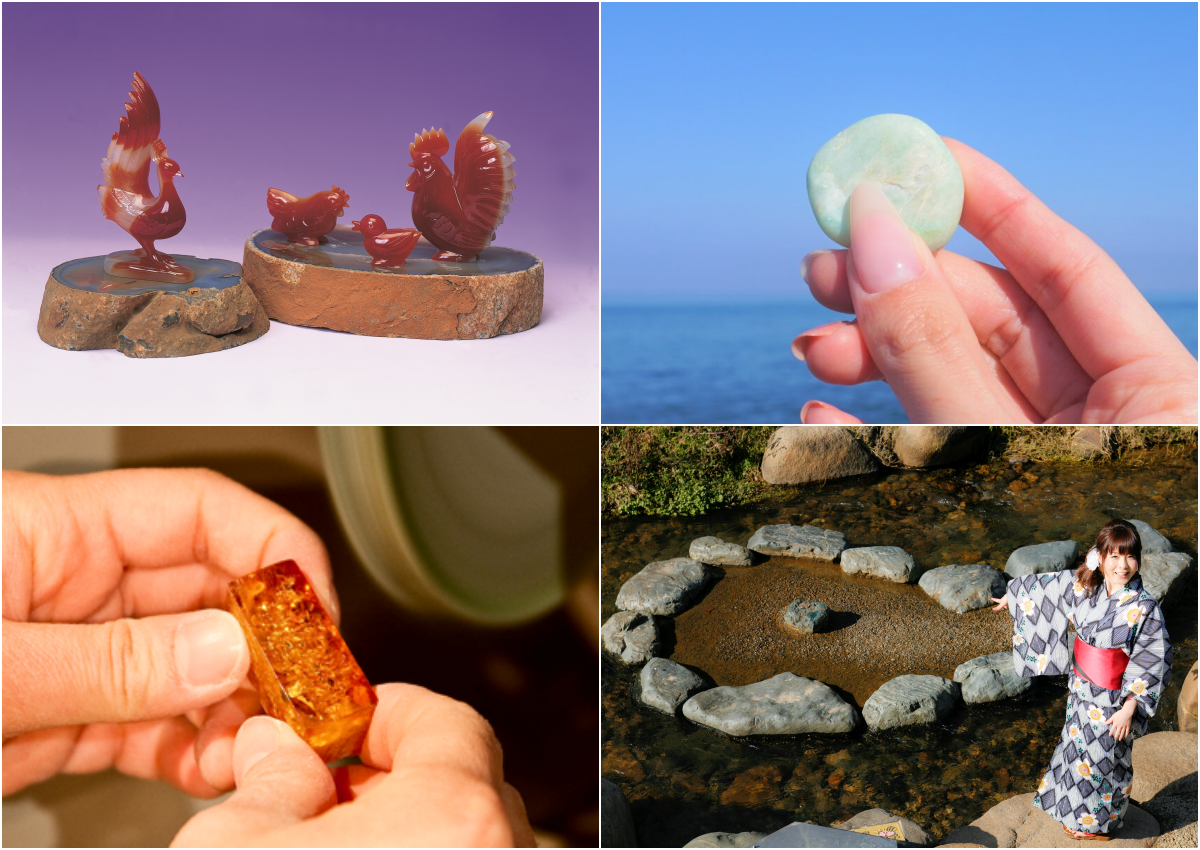
In Japan, various natural stones such as quartz, jade, agate, coral, etc. can be extracted. The traditional craft of transforming beautiful polished natural stones into lively dragons, falcons, tea ceremony vessels, etc., has fascinated many people both now and in the past.
Among the natural stonework in Japan, we will introduce the crafts designated as Traditional Crafts by the Minister of Economy, Trade and Industry and the crafts designated as Traditional Crafts by each prefecture. Let's enjoy the world of Japan's natural stones, which shine even more attractively in the hands of skilled craftsmen.
💎 How much do you need to be able to buy "natural stone"? View bracelets and rings (Yahoo! Shopping)
*If you purchase or pre-order the products introduced in this article, a portion of the sales may be returned to FUN! JAPAN.
Ornaments and Beads: Natural Stone is an Indispensable Material for Traditional Crafts
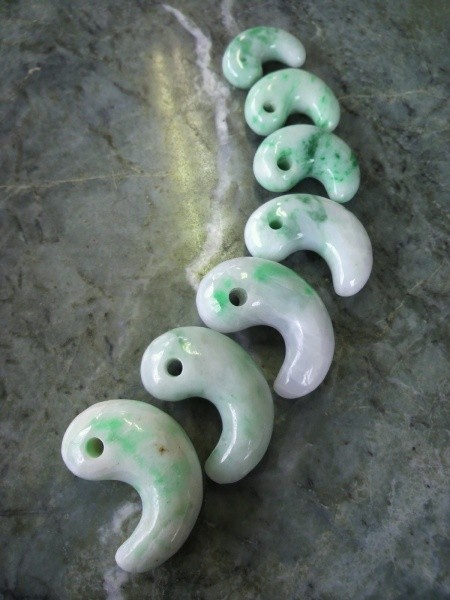
In Japan since the ancient time, there have been productions of ornaments such as magatama, kudatama (tubular bead), and kanzashi (ornamental hairpin), as well as decorations for Buddha statues and Buddhist utensils, and even sword decorations. Many of these traditional crafts are made from natural stones. In addition, due to the work of natural stone, there are traditional carving and polishing techniques that are still passed down and preserved to this day.
Natural Stone Mined and Loved in Japan
In Japan which is blessed with many volcanoes and abundant nature, various precious stones have been discovered. Among them, natural stones that have been loved since ancient times are jade, amber, quartz, and agate.
Jade (Hisui: 翡翠)
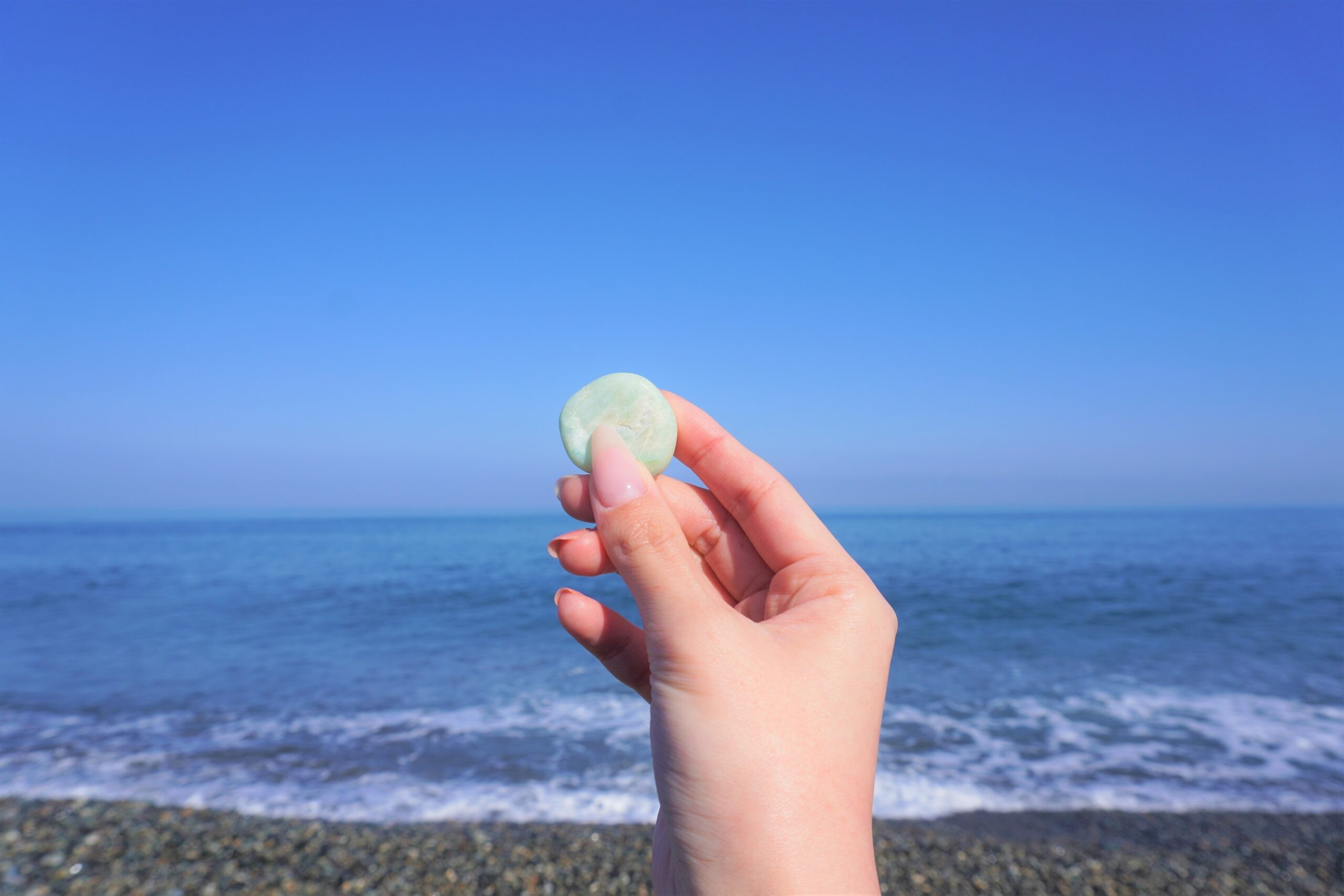
Jade is the only natural stone in Japan that has been selected as the "National Stone", and the largest production area in Japan is the Itoigawa area of Niigata Prefecture.
Although green is the most common, there are actually many different colors of jade, including white, purple, blue, and black. This is because jade is not a single mineral, but is made up of multiple minerals, mainly jade pyroxene, and its color is determined by trace components such as iron and titanium.
By the way, jade pyroxene itself is close to pure white in color, and when traces of iron and chromium are included, it becomes dark green, and when traces of titanium and iron are included, it becomes light purple.
It has been used as an ornament since the Jomon period, and one of the world's oldest jade cultures flourished in Itoigawa. In addition, the town of Asahi in Toyama Prefecture is also known as a jade town, and you can also experience picking up jade at the seaside.
💎 Find a "Jade" Ring or Bracelet (Yahoo! Shopping)
Amber (Kohaku: 琥珀)
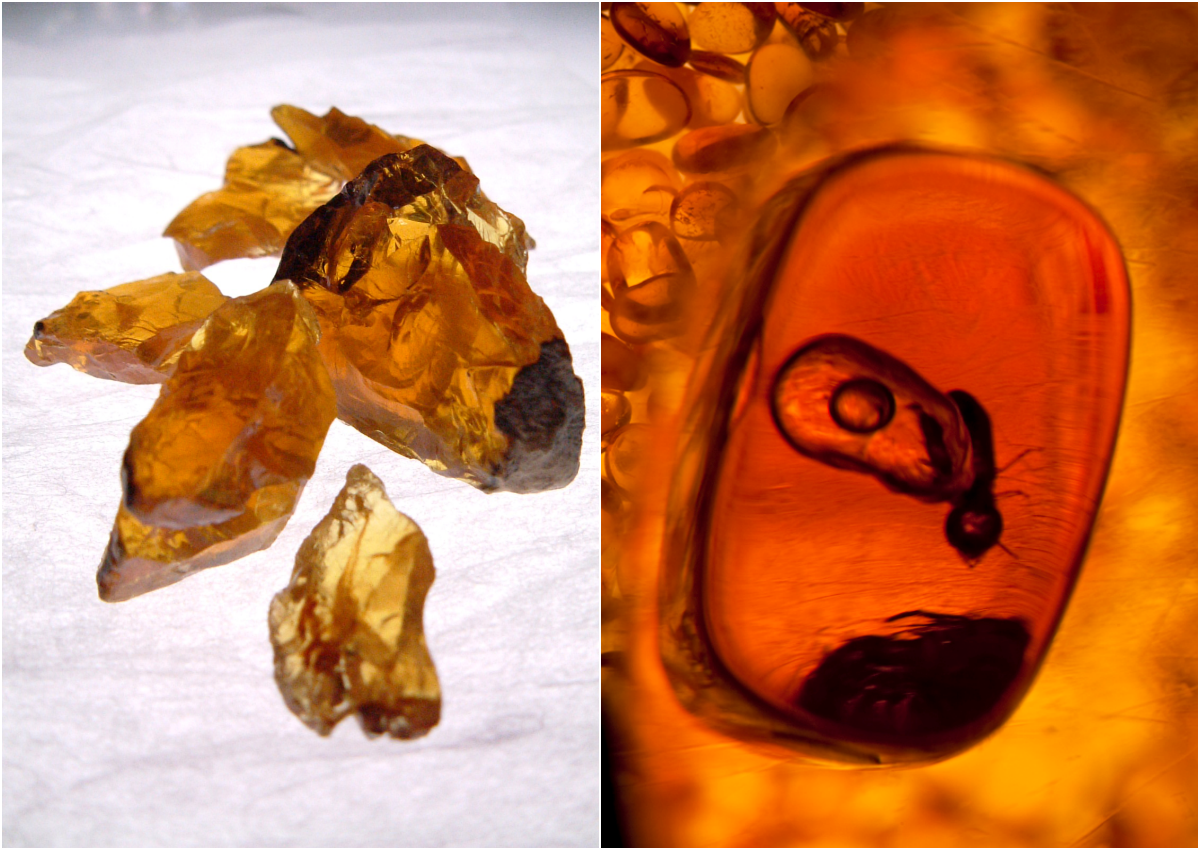
Amber is a plant-derived gemstone that has been fossilized in the ground over tens of millions of years from resin secreted by ancient trees.
For this reason, "insect-filled amber" that traps insects and plants is sometimes found, and it is highly regarded academically. When you think of amber, you may think of a yellowish-brown color like whiskey. However, in fact, there are a variety of colors such as red, white, blue, and green.
In Japan, it has been used as decorations, incense, paints, and medicines since the Jomon period. The main production area in Japan is Kuji City, Iwate Prefecture, where amber from about 90 million years ago is processed and crafted into products.
💎 Find an "Amber" Necklace or Brooch (Yahoo! Shopping)
Quartz (Suishō: 水晶)
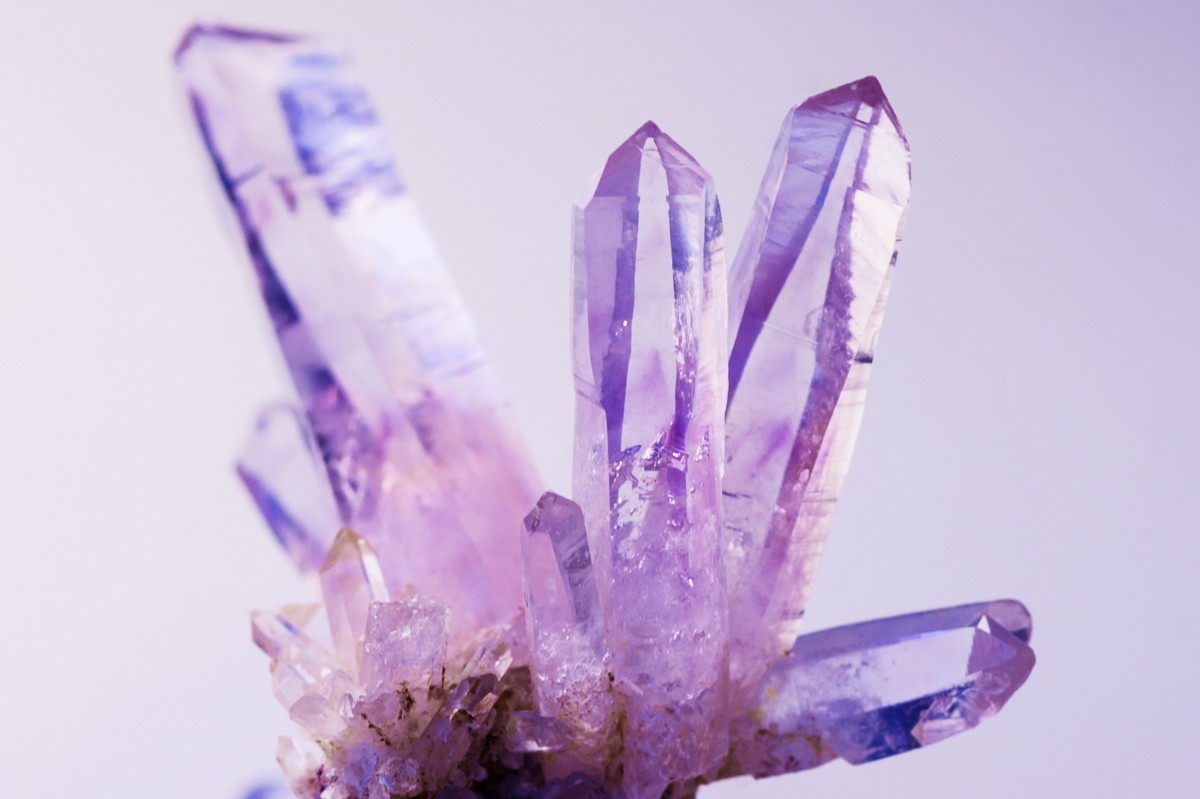
Mineralogically, suisho (水晶) in Japanese refers to a mineral called "quartz" in which silicon dioxide is crystallized, and it is a hexagonal prism that has grown particularly transparent and large.
Quartz crystals come in a variety of colors, each with a different name. For example, many people may be surprised to hear that purple is called amethyst, yellow is called citrine, and pink is called rose quartz. It also comes in a variety of other colors and is widely used as decorations and crafts.
Quartz is produced all over the world, but it is also found in various places in Japan, and Yamanashi Prefecture has been known as a production area of high-quality quartz since ancient times. In addition, in some areas of Japan, quartz has been worshipped as sacred, and it is cherished as mysterious stone.
💎 Find "Quartz" Lucky Items and Bracelets (Yahoo! Shopping)
Agate (Menō: 瑪瑙)
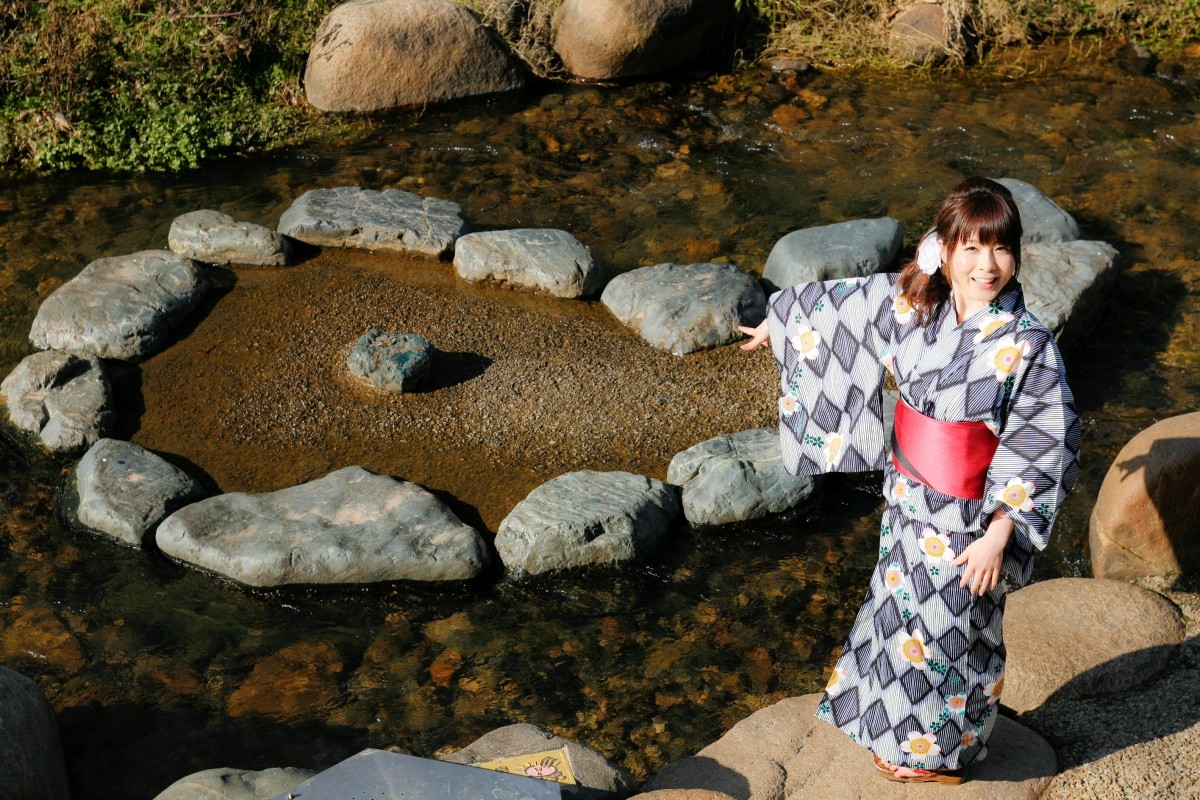
Agate is a type of chalcedony, which is a collection of fine quartz grains. Of the chalcedony, those that are dark and opaque are called jasper, and those in which chalcedony precipitates in layers to form a striped pattern are called agate.
The trace components and impurities contained in it give rise to colors such as white, blue, red, and yellow, which have been widely used in ornaments, figurines, and seals from ancient times to the present day. The main production areas in Japan are Hokkaido, Toyama, Ishikawa, Ibaraki, and Shimane prefectures, where you can enjoy the beautiful patterns created by nature.
In addition, at Tamatsukuri Onsen in Shimane Prefecture, there is a small island shaped like Magatama made of rough blue agate called "Happiness Blue Agate" (しあわせ青めのう / shiawase ao menō), which is a tourist attraction.
💎 Find Agate Rings and Bracelets (Yahoo! Shopping)
Precious Coral
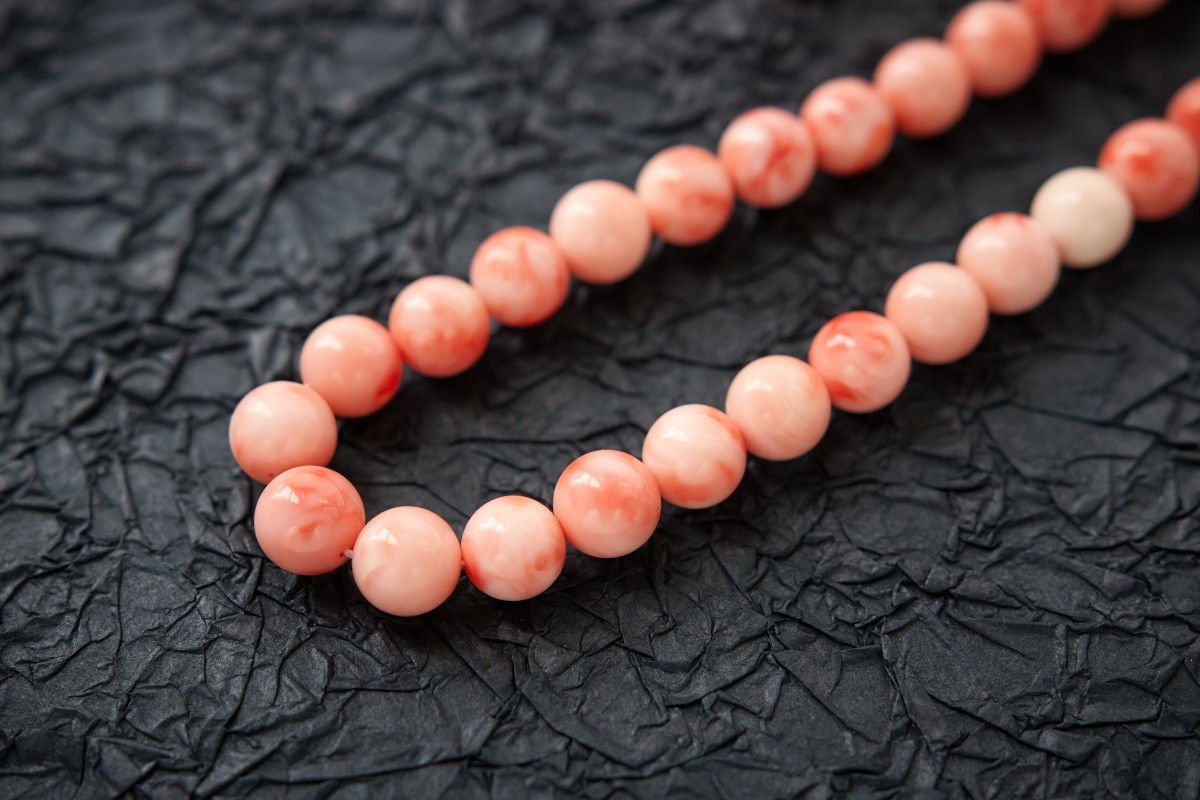
Precious coral is a gemstone of the sea that grows in the cold deep waters where light does not reach at depths of 100 to 600 meters. Unlike reef-building corals, which grow relatively quickly in shallow, warm waters and form coral reefs, precious corals grow only a few millimeters per year and grow over a long period of time.
The main corals produced in Japan are red coral, peach coral, and white coral, which have become available since the beginning of the 19th century. When polished, it gives off a beautiful luster such as red, pink, and white, and is very popular as jewelry.
The oldest surviving precious coral in Japan is from the Mediterranean, which was decorated with the crowns of Emperor Shomu and Empress Kōmyō at the Great Buddha Opening Ceremony of Todaiji Temple in 752. It is still in the collection of the Shosoin Temple in Nara.
💎 Find "Precious Coral" Earrings and Bracelets (Yahoo! Shopping)
Natural Stone Work designated as a Traditional Craft
As of 2025, there are two types of natural stone work designated as Traditional Crafts by the Minister of Economy, Trade and Industry: "Koshu Crystal and Precious Stone Carving" and "Wakasa Agate Craft". We will introduce the characteristics, history, and charm of each.
Koshu Crystal and Precious Stone Carving (Yamanashi Prefecture)
Koshu Crystal and Precious Stone Carving is a work used in traditional crafts that represent Yamanashi Prefecture, and its origin dates back to about 1,100 years ago, when rough quartz was discovered in the Ontake Shosenkyo Gorge.
At the time of its discovery, rough stones were displayed as they were, but in the middle of the Edo period, they began to ask jade craftsmen in Kyoto to process them, and at the end of the Edo period, craftsmen were invited from Kyoto, and a technique of wrapping Kongosha (金剛砂: an abrasive material made from stones as hard as diamonds) around an iron plate and polishing it was introduced, and Koshu's unique crystal work technique developed greatly.
The greatest attraction lies in the advanced and delicate carving techniques such as "openwork", "deep carving", and "line carving" applied to transparent natural stone. These techniques have produced a wide variety of works, including sculptures of dragons and horses, incense burners, teacups for tea ceremonies, and jewelry such as rings and bracelets. Works using Koshu Crystal and Precious Stone Carving technique are highly artistic and popular both in Japan and abroad.
Wakasa Agate Craft (Fukui Prefecture)
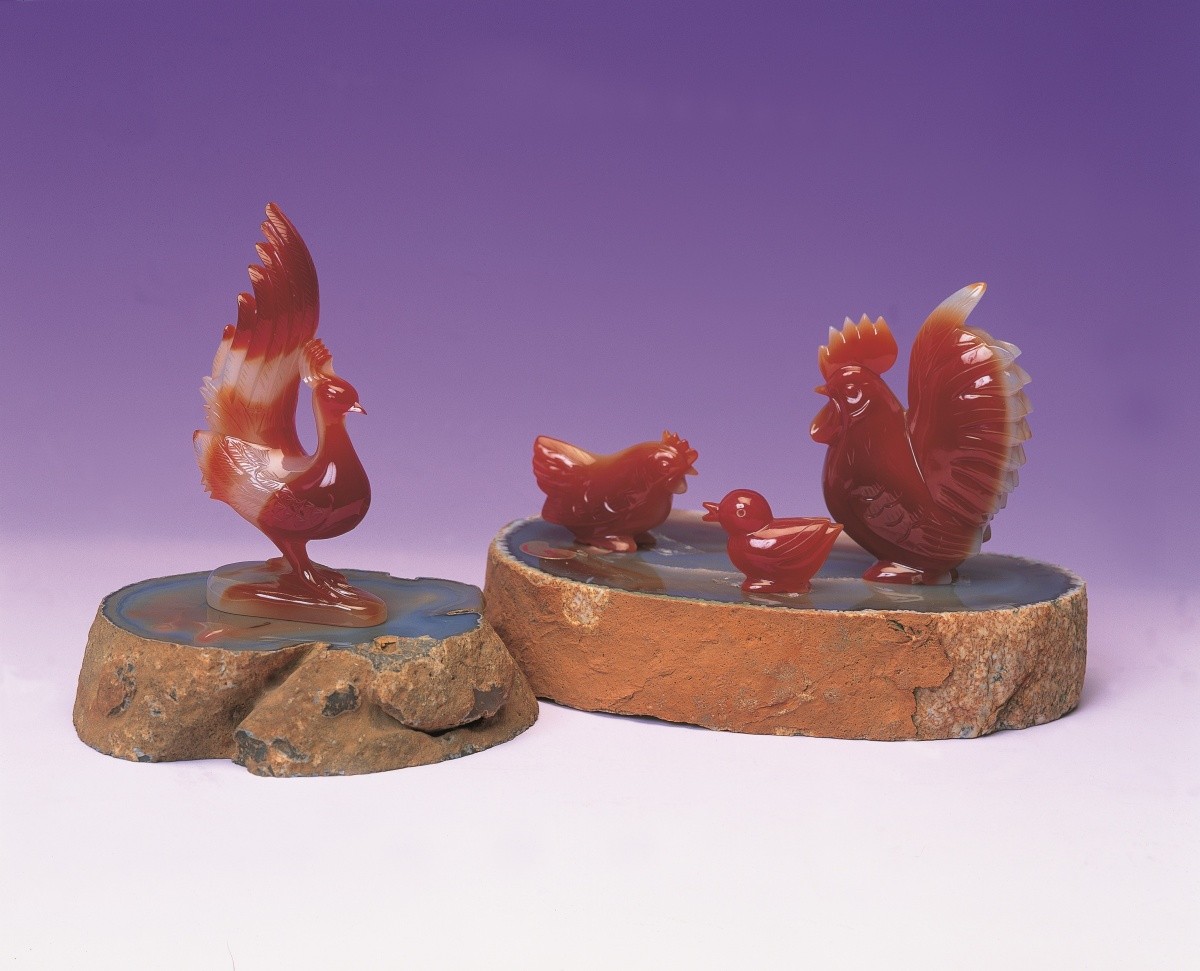
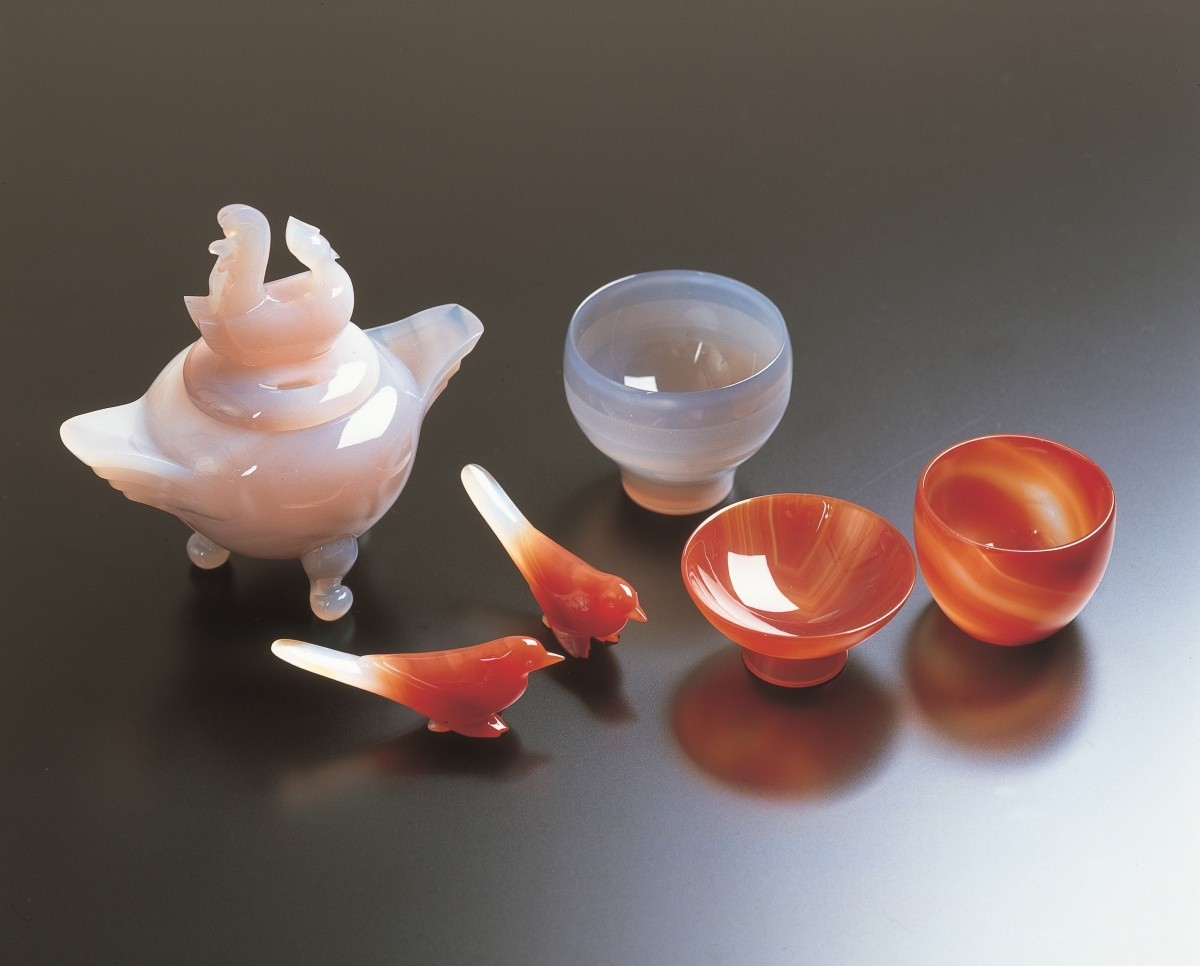
Wakasa Agate Craft, which has been inherited in Obama City, Fukui Prefecture, is a work used in traditional crafts that are full of charm unique to agate, which emits a colorful and mysterious brilliance.
It dates back to the Nara period (710~794), and is said to have originated when the wanizoku (鰐族, literally "crocodile tribe"), a sea people, built a "crocodile road" in front of the shrine and produced ornaments using agate.
In the middle of the Edo period, a unique "quenching" technique was established, in which rough stones were baked at 200 to 300 degrees Celsius to develop color, and the deep color and beauty of agate were further brought out. In the 19th century, carving techniques were added, and the elaborate craft style that we know today was completed.
The process of carving and polishing agate, which is extremely hard with a hardness of 7 on the Mohs scale, is a true crystallization of craftsmanship, with a wide range of works such as Buddhist statues, incense burners, and trinkets.
4 Traditional Crafts of Representative Natural Stone Designated by the Prefecture
Traditional Crafts using natural stones are designated by the national government (Ministry of Economy, Trade and Industry), as well as those designated by each prefecture. Here, we will focus on four regions of natural stones that are designated as Traditional Crafts.
Nishikiishi (Aomori Prefecture)
Nishikiishi (錦石, literally "brocade stone") is a general term for natural stones such as jasper, agate, and petrified wood that shine beautifully when polished. It is so called because the colors and patterns are so beautiful that they can be mistaken for brocade.
In ancient times, it was used as a magatama in the Jomon period, and in the Edo period, it was processed into kanzashi (ornamental hairpins) and netsuke (obi decoration) as "Tsugaru dama" and was favored by many. It is said that it was once exported to the Tang Dynasty (China) and Tianzhu (India), and is still loved by many people today.
💎 What is the Market Price of "Nishikiishi"? Check out the price range at Yahoo! Shopping
Kuji Amber (Iwate Prefecture)
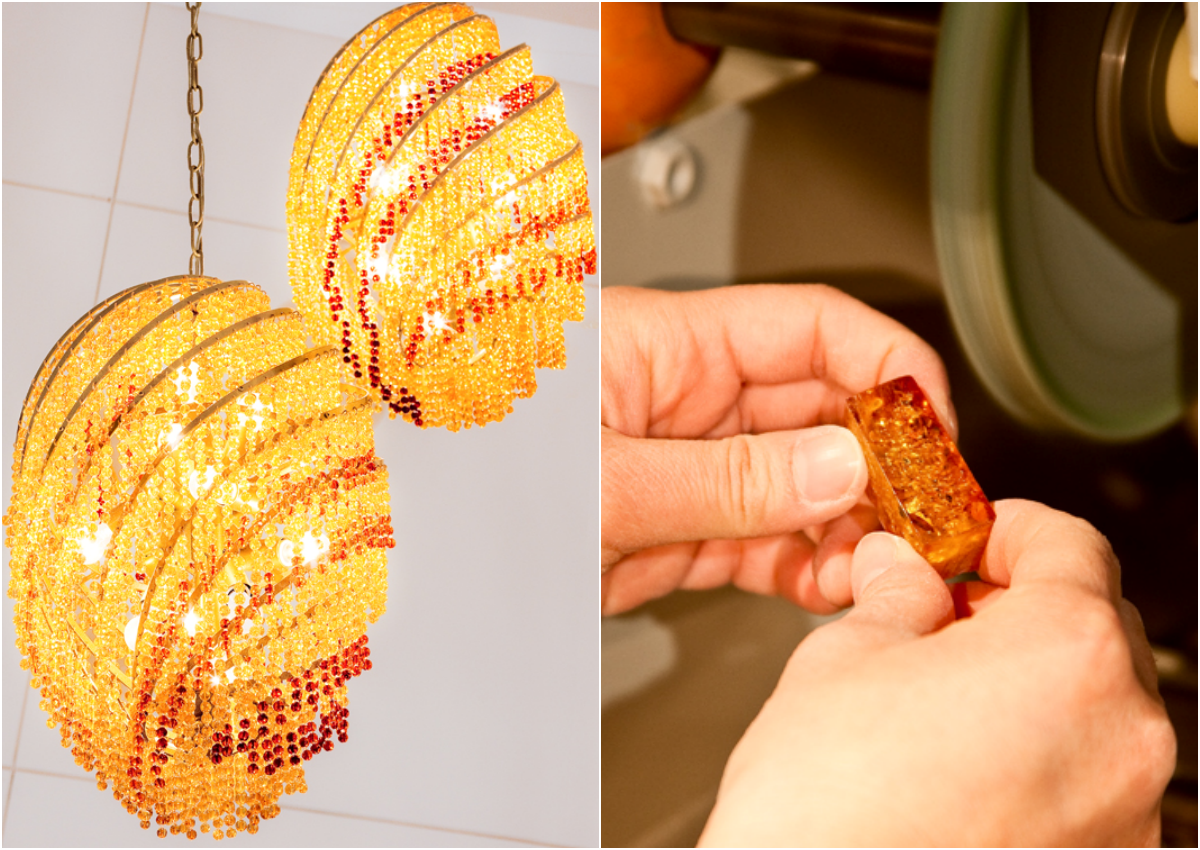
Kuji amber has been made in Kuji City, Iwate Prefecture, one of the world's leading amber producing areas. It originated in the Kofun period. Amber from Kuji, which was transported to the imperial court, has also been excavated from the burial mounds. In 1645 (Edo period), it was designated as a special product of the Morioka Domain. It was highly acclaimed in Kyoto and Edo (present-day Tokyo) at the time.
The amber harvested in Kuji City is from the time when dinosaurs existed about 90 million years ago. Of course, some amber is older than that, but it is considered one of the the oldest ambers that has value as jewelry and crafts. The main products are watches, accessories, interiors, etc. In addition, amber with insects, which is also attracting attention as a time capsule of the late Cretaceous period of the Mesozoic era, is also used in various products of Kuji amber. It is a precious stone work that allows you to feel the ancient world up close.
💎 What is the Market Price of "Kuji Amber"? Check out the price range at Yahoo! Shopping
Precious Coral (Kochi Prefecture)
In Kochi Prefecture, the birthplace of Japan's coral fishing industry and the center of the precious coral industry, beautiful crafts are made using rare precious coral that lives in the deep sea.
The corals produced include red coral, peach coral, and white coral. Among them, blood red coral, which means "redder than blood," is a particularly popular coral because of its bright red color and glossy brilliance.
These precious corals are painstakingly polished by skilled artisans and are widely loved as jewelry, kimono accessories, and figurines. Kochi's unique processing technology, which maximizes the individuality of the material, is highly regarded worldwide, and it is a gem filled with technology and aesthetics that have been passed down from generation to generation.
💎 What is the Market Price of "Precious Coral"? Check out the price range at Yahoo! Shopping
Goto Sango (Nagasaki Prefecture)
Goto Sango (Goto Coral) is a traditional craft designated by the Governor of Nagasaki Prefecture that is processed in Goto Tomie Town on the Goto Islands of Nagasaki Prefecture. The origin began in 1886 during the Meiji era, when precious coral was discovered off the coast of the Goto Islands. Even now, it is sometimes collected in the surrounding waters, and processing continues while taking resource conservation into consideration.
The main products include necklaces, bracelets, accessories such as obi fastening, and figurines created by the "Goto carving" that has been passed down for many years, and many beautiful works are created with delicate techniques.
Natural stones collected in various parts of Japan and a number of crafting techniques that make natural stones shine beautifully. So, why not try experiencing shopping and activities that focus on natural stones on your next trip to Japan?
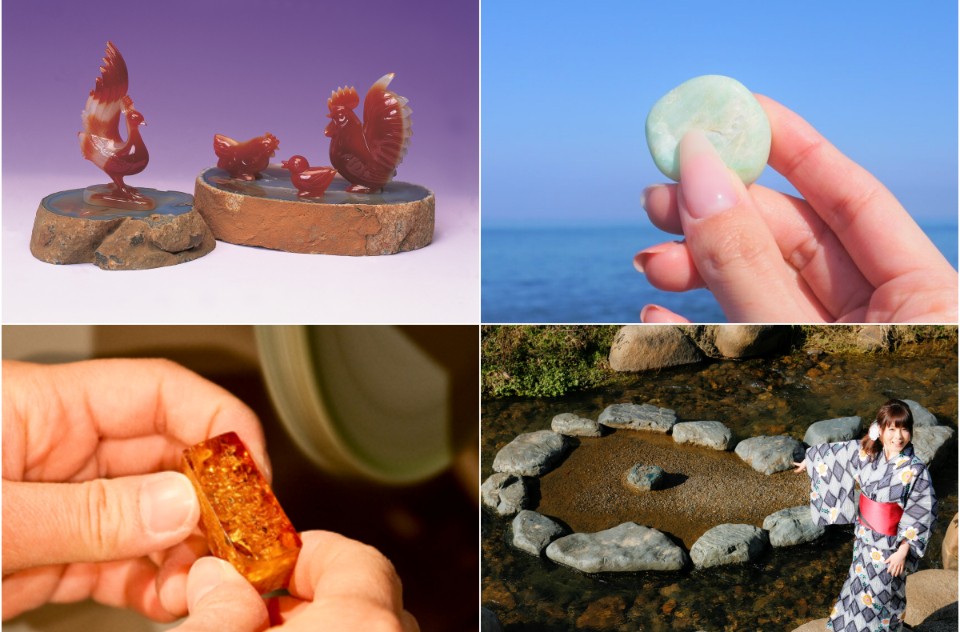
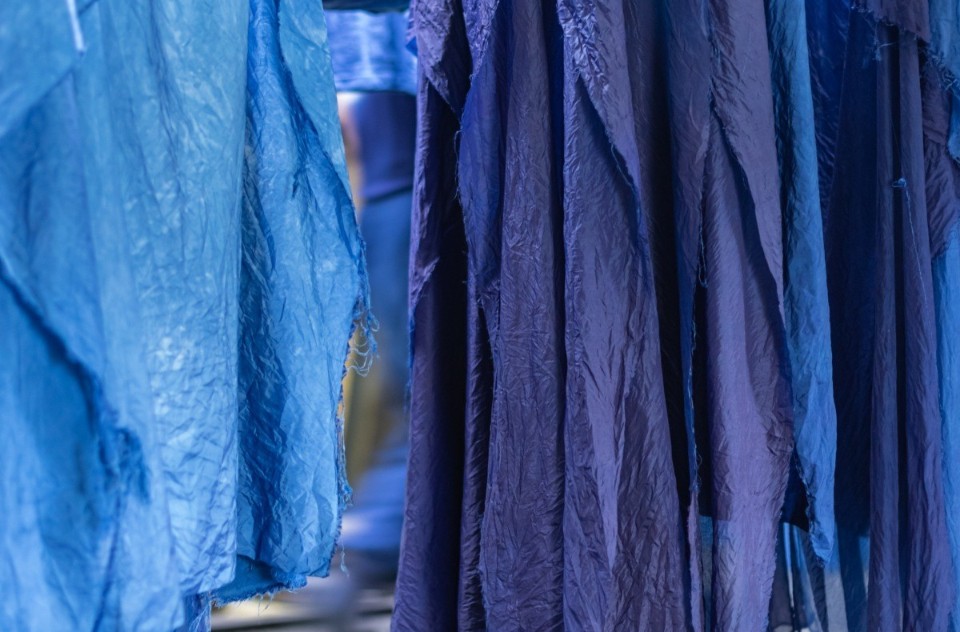
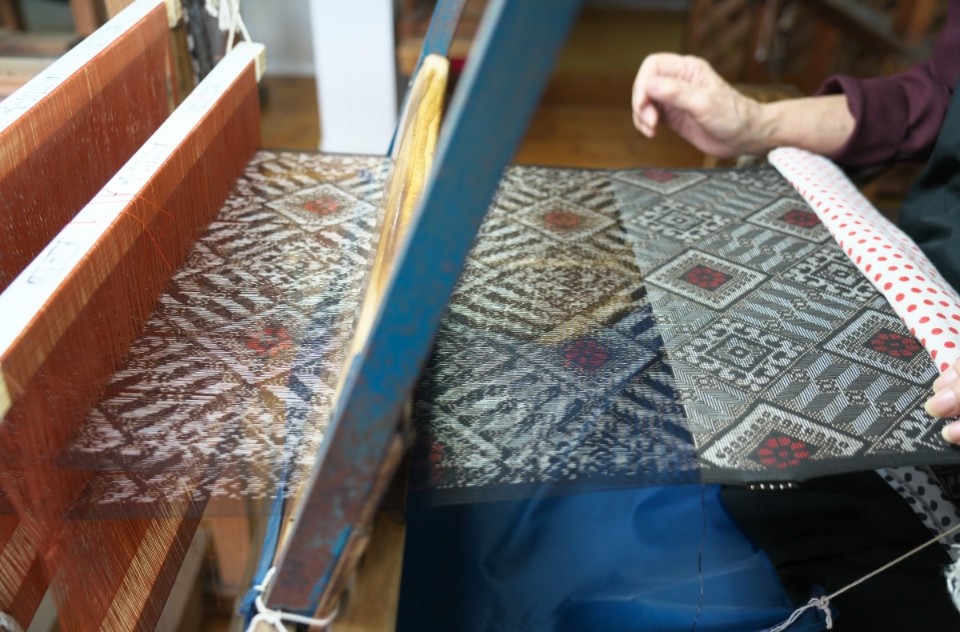
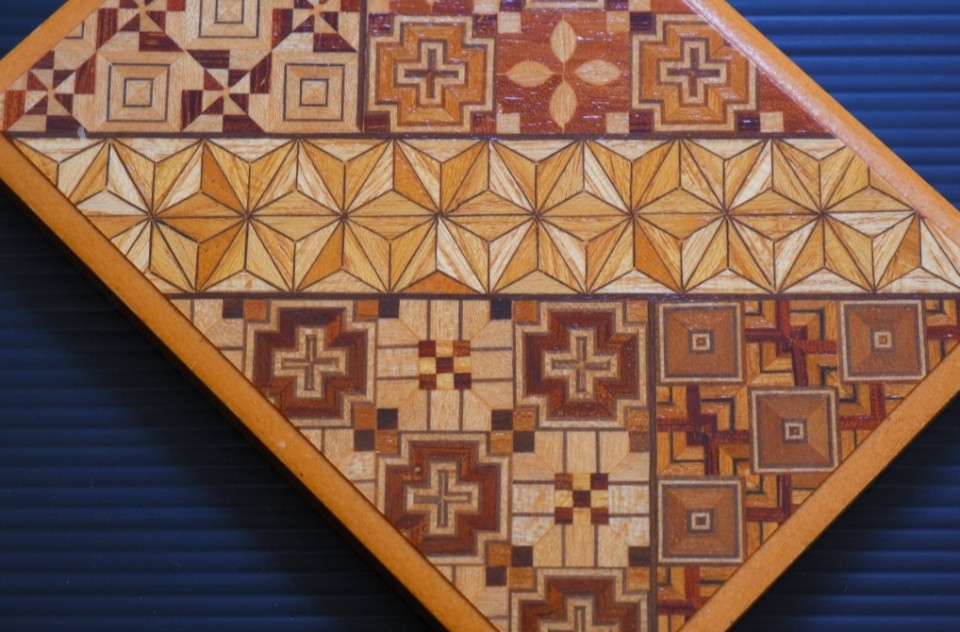
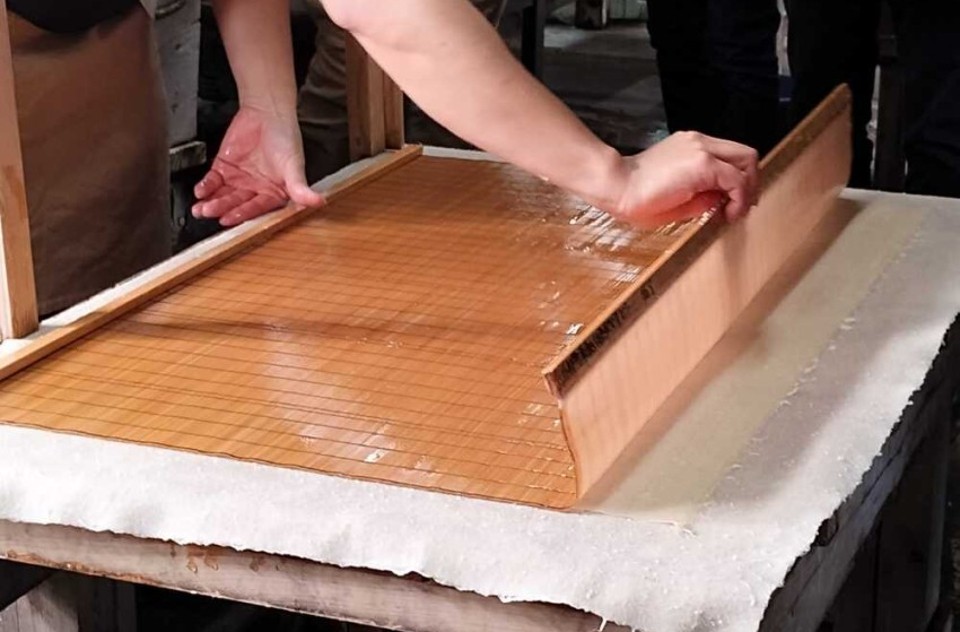
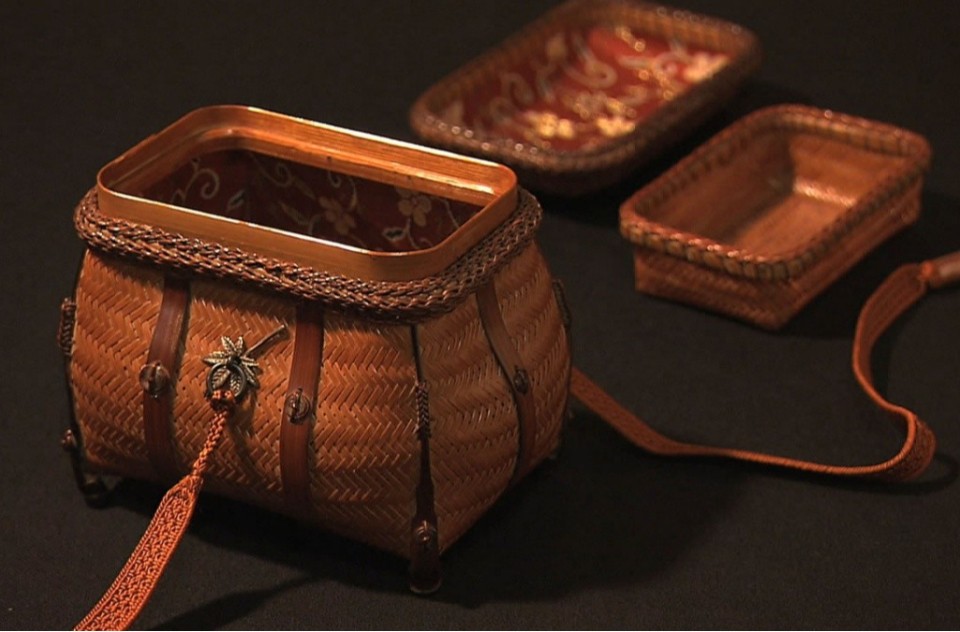
Comments